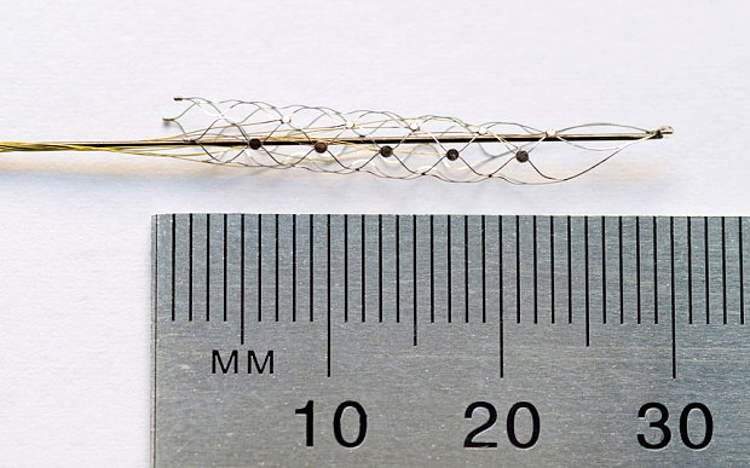BY: MARIYA GUZOVA
Australian researchers are hoping to change the lives of millions of people with spinal cord injuries with a 3cm long net of electrodes and wires. This ‘bionic spine’ would allow paralyzed patients to control bionic limbs with the use of subconscious thought. The spine communicates with a transmitter on the patient’s shoulder, which then communicates with an external mobility assist device, such as an exoskeleton.
One of the major benefits of this innovative technology is that it isn’t very invasive, and doesn’t require any open brain surgery. The device is implanted using a small catheter; it is fed through blood vessels into the brain until it reaches the top of the motor cortex, which is where nerve impulses initiate involuntary muscle movement. Electrodes on the bionic spine read these electrical impulses and transmit the information to bionic limbs, telling them to move. The actual surgery is similar to those already being performed to clear out clots in blood vessels, and carries fairly low risk.
Australian researchers are hoping to change the lives of millions of people with spinal cord injuries with a 3cm long net of electrodes and wires.
Electrodes on the bionic spine read these electrical impulses and transmit the information to bionic limbs, telling them to move.
Brain-machine interface is one of the leading areas of research when it comes to the treatment of paralysis. In 2013, researchers in the United States and the German Aerospace Centre enabled a paralyzed woman to lift a drink with a thought-controlled robotic arm. In 2014, a monkey was able to manipulate the arm of a sedated fellow primate using thoughts transferred by electrodes from one monkey to the other.
Brain-machine interface is one of the leading areas of research when it comes to the treatment of paralysis.
“The cardiac pacemaker is essentially the classic bionic device — it goes inside a vein, it sits next to the heart and it works for a lifetime,” researcher Thomas Oxley explains. “And we are essentially trying to do the exact same thing for the brain. Go up a vein, leave it there, and have a lifetime of recordings coming out of it.”
Human trials of this technology will begin next year in Victoria, with three patients with lower limb paralysis. It is also hoped that the research, which involved 39 scientists from the Royal Melbourne Hospital, the University of Melbourne and the Florey Institute of Neuroscience and Mental Health, could also be used to treat epilepsy, depression and Parkinson’s.
Image sourcing: telegraph.co.uk, usc.edu, smh.com.au






